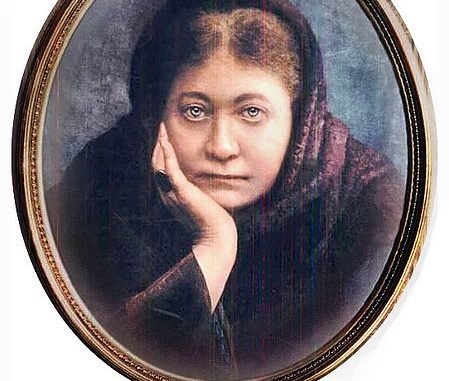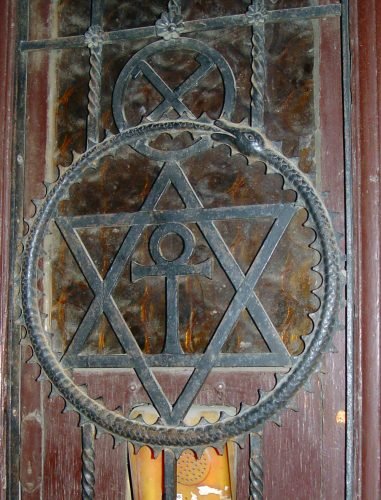
In this episode we explore the influence of this modern day mystic occultist Helena Blavatsky that may be responsible for the New Age, current policies of the United Nations, and even infiltration of the Christian faith. Theosophy is a philosophy adopted by politicians, dignitaries, and leaders who have a say in world policies. Blavatsky fused together several beliefs into one cohesive philosophy that consolidated Satanism with mysticism and Luciferianism and mixed it with Christianity. What do you get when you cross all these together? New Age.
Born Helena Petrovna von Hahn into a Russian family in the 19th century, her influence came from her grandfather’s library of esoteric texts and classic philosophy that drove her hunger for more insight into these philosophies.
Before her 18th birthday she married Nikifor Blavatsky that gave her the name Blavatsky. She soon became estranged from the marriage and in her twenties traveled the world to discover the secrets of various cultures and civilizations, gathering information, uncovering lost texts, and fusing them with legends of mysticism from ancient religions and beliefs.
She traveled to various parts of the world from Canad to the United States to Asia, to India seeking gurus to strengthen her knowledge of spirituality. In Cairo she tried to form a Spiritual Society which soon failed. Then from the Middle East landed in New York City to develop her esoteric skills. That is where she met Henry Steel Olcott, who along with William Judge, founded the Theosophical Society in 1875. Somewhere along the line she was also initiated into the Freemason Society, as well as being a Rosicrucian. The Society formed a nucleus for a Universal Brotherhood of Humanity.
The outline of Theosophy brought together accumulated wisdom of the ages from generations of Seers, that fused several philosophies, taking a perspective of divine wisdom, with classic philosophies of Mystery Schools, along with Gnosticism, Tibetan philosophy, Eastern Mysticism, Hinduism, Buddhism, Kabbalah, and mystic Christianity. Its dichotomy comes with its regard for the supernatural philosophies, the truths of religions fused with dogmas of Christian Theology, while on the other hand an equally dogmatic materialistic view of science. This likely became the fusion to “metaphysics.” 
Olscot convinced Blavatsky that it was necessary to develop Buddhism into a modern philosophy. Several splits occurred between the Society to form other offshoots, as the Hermetic Society. A campaign went out to discredit Blavatsky using (ironically) Christian publications.
Gandhi joined Blavatsky’s Theosophical Society and became an associated of Blavatsky to further infuse Eastern philosophy identifying true Theosophists as of this sect. She launched Lucifer magazine, a monthly magazine designed, as stated on its title-page, “to bring to light the hidden things of darkness.” So irrefutably is this a Luciferian doctrine. But her aim was to dismiss the paranormal phenomena and focus of the philosophical aspects. She was also joined by Social reformer Annie Besant.
Her most famous works, The Secret Doctrine, and Isis Unveiled gave her the credentials to speak at high society meetings around the United States and England. Her works became essential reading for occultists, philosophers, and modern freethinkers, influencing those who had position to spew these philosophies on political leaders as their aides and advisors.
Theosophy influenced Lucis Trust, originally called Lucifer Press, formed to publish esoteric works. Their work continued into what developed into the progression of New Age.
Lucis Trust managed to host the United Nations to become their spiritual guide. See my article The United Nations Luciferian Connection.
